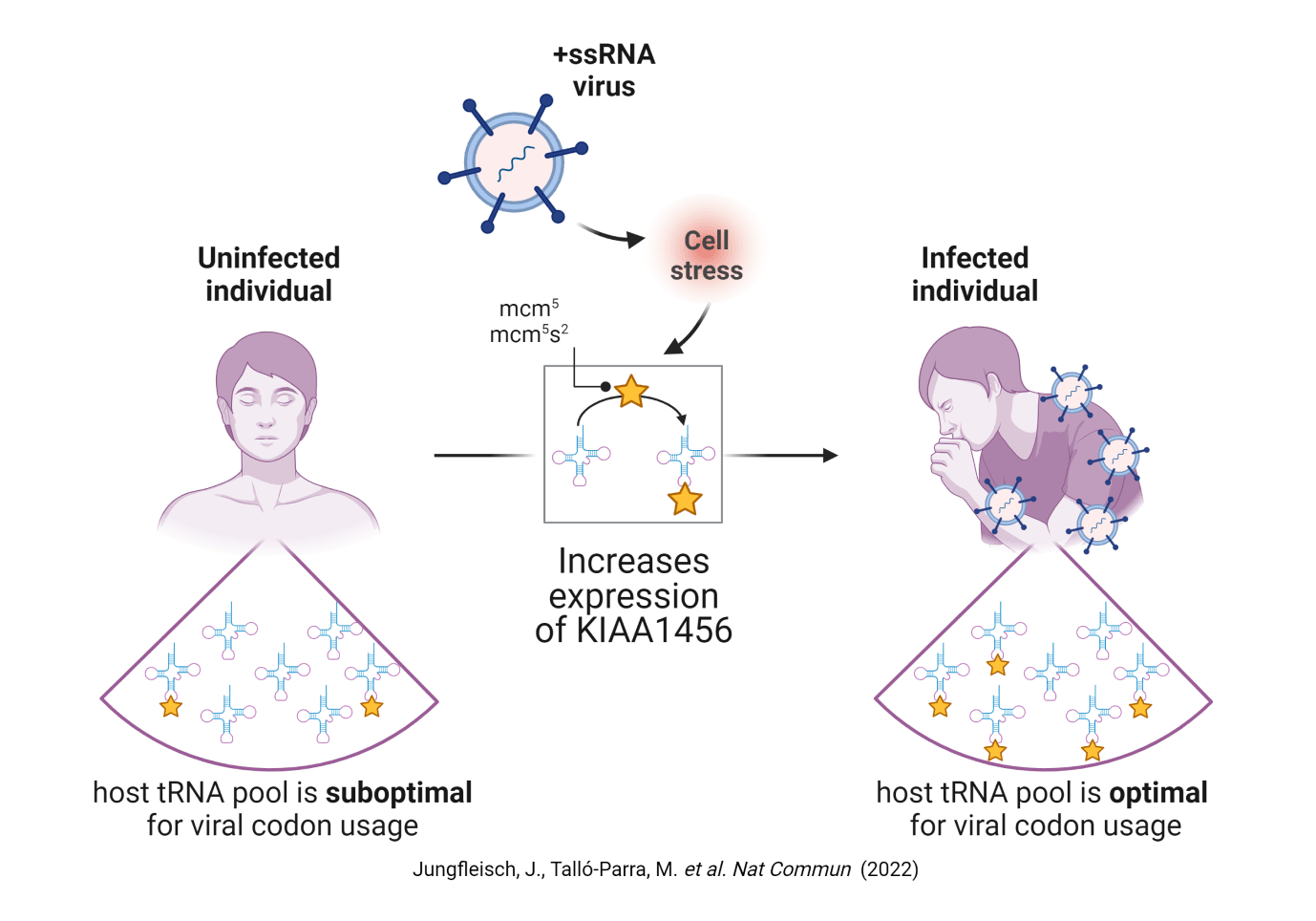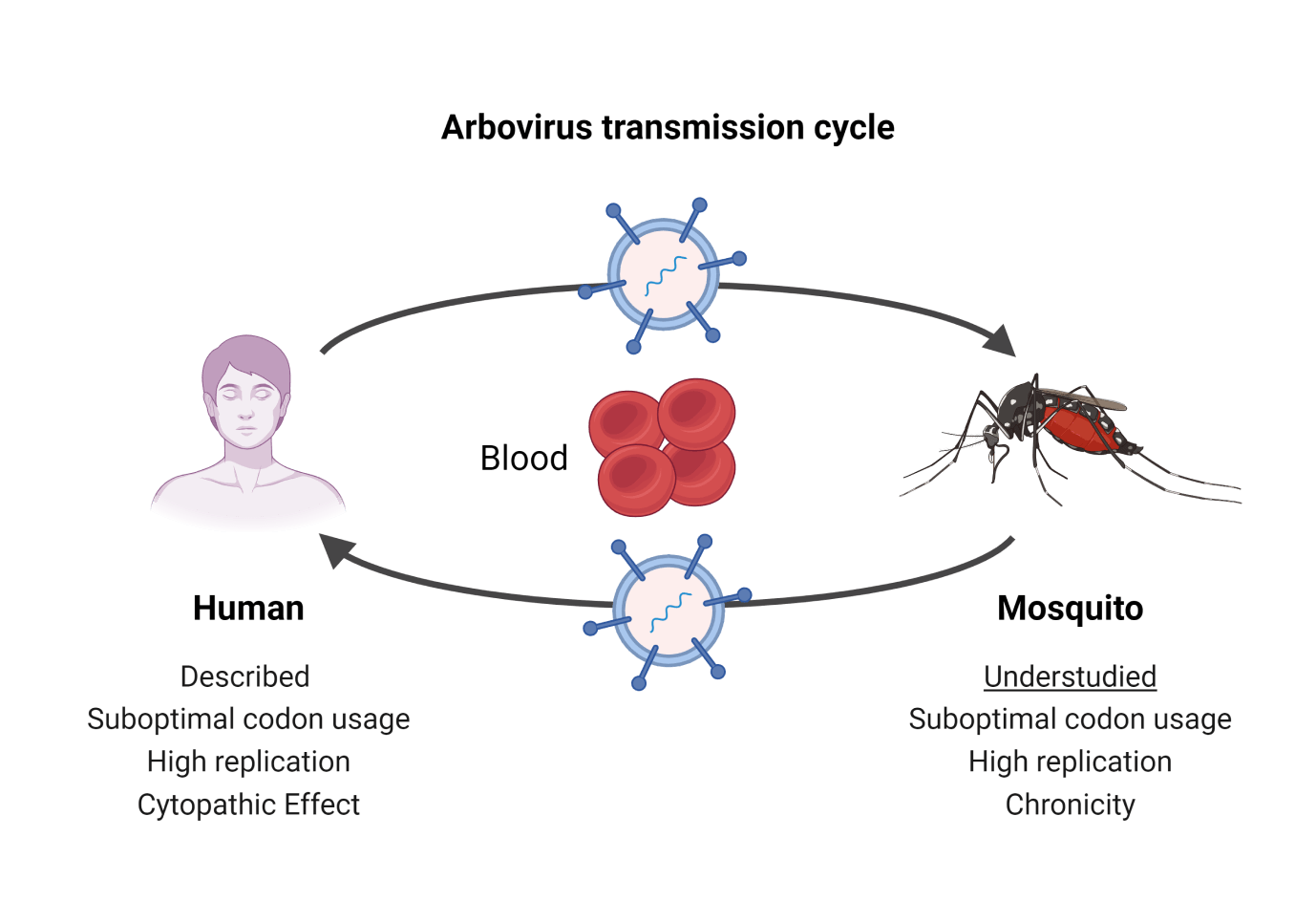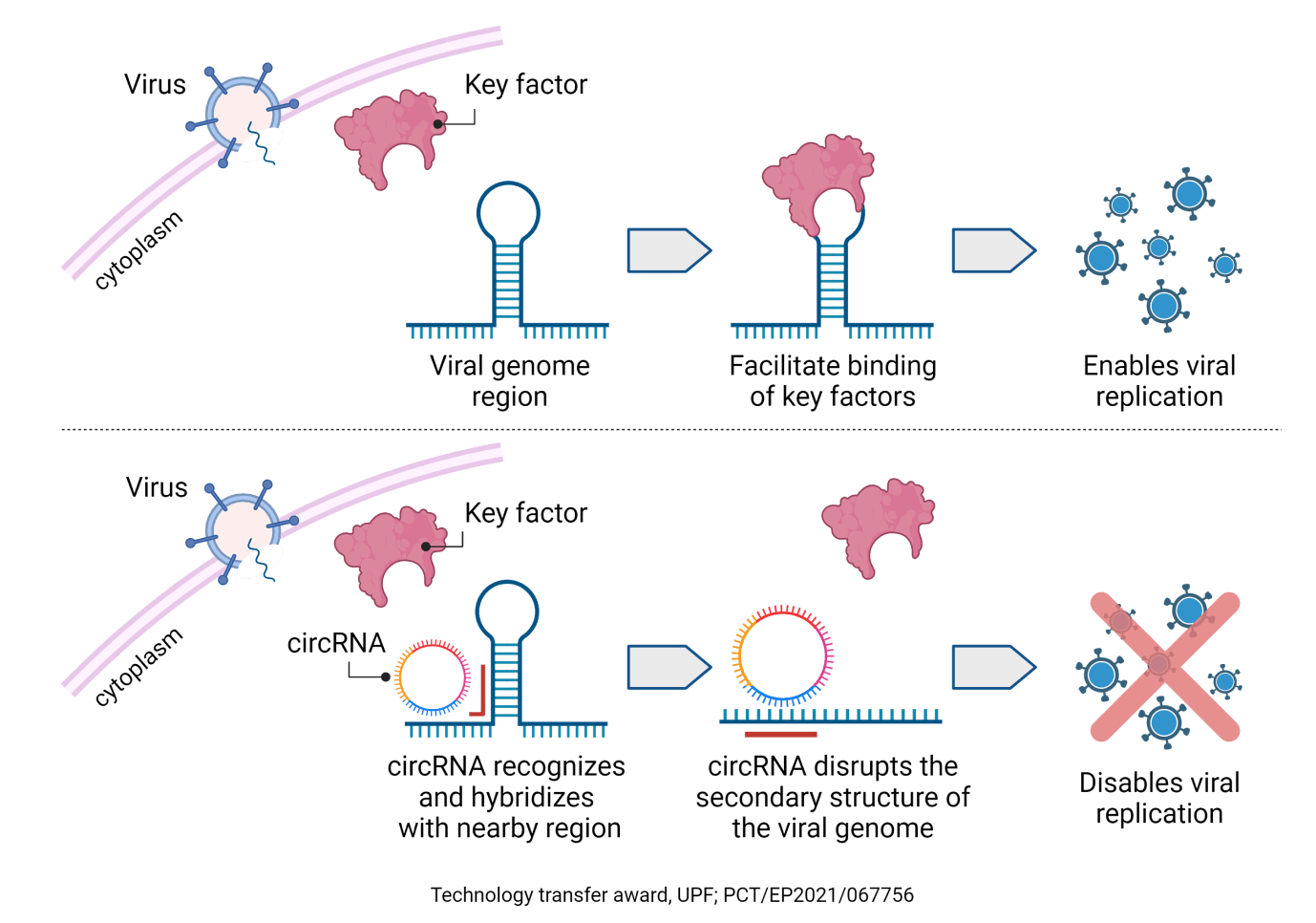Positive-strand RNA ((+)RNA) viruses include major new and emerging human pathogens such as SARS-CoV-2 and the mosquito-borne dengue or chikungunya viruses. Upon virus entry, a crucial first step in their life cycle is to efficiently translate their genomes. How do they manage to compete with thousands of cellular mRNAs? How do they alter the host translational environment to their benefit?
Recently, our laboratory uncovered a CHIKV-induced alteration of the host cell epitranscriptome that favors viral RNA translation. One of our current interests aims to decipher this viral strategy and its exploitation across viral groups and hosts. To achieve this, we combine cutting edge -omic analyses along with cellular and molecular approaches in both cell culture and in in vivo settings.

Created with BioRender.com
Mosquito-borne viruses pose significant global threats, with over 80% of the world’s population at risk. A better understanding of the fundamental mechanisms governing arboviruses-mosquito interactions is crucial for the development of novel biological approaches to disrupt disease transmission by vectors.
We aim to decipher how mosquito-borne viruses interact with the mosquito translation machinery, a key step in establishing infection that is completely unexplored. For this, we combine cutting-edge -omic analyses with cellular and molecular approaches in both cell culture and in Aedes aegypti.

Created with BioRender.com
Humanity faces an almost unlimited pool of viral threats, with RNA viruses posing the biggest menace due to their high replication rates and mutability. To handle and contain such upcoming and unpredictable outbreaks,it is crucial to develop broad-spectrum antivirals or platforms for swift production of specific antivirals.
We have recently developed a circular RNA-based antiviral therapy to fulfill these needs. Further objectives involve (i) its pre-clinical validation through the newly established spin-off, NoctuRNA Therapeutics, and (ii) collaborations within a European framework for screening and mode-of-action studies of novel antiviral drugs.

Created with BioRender.com







